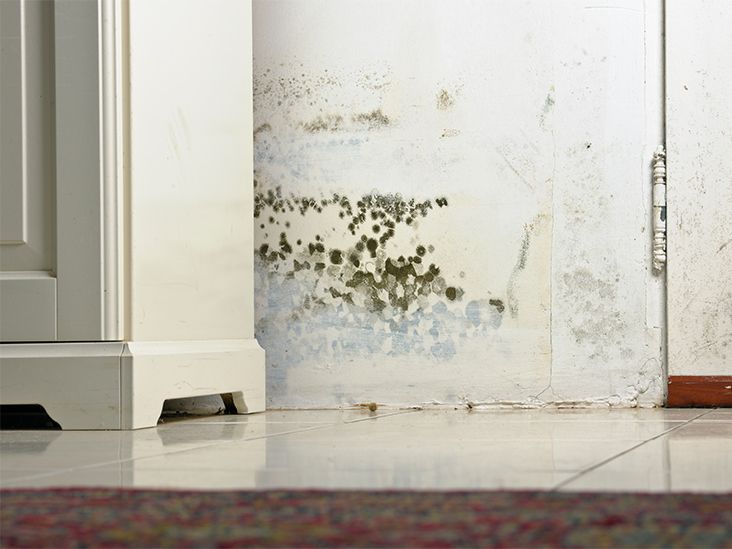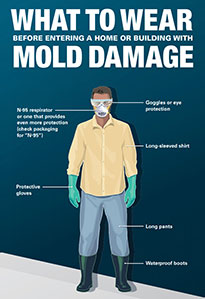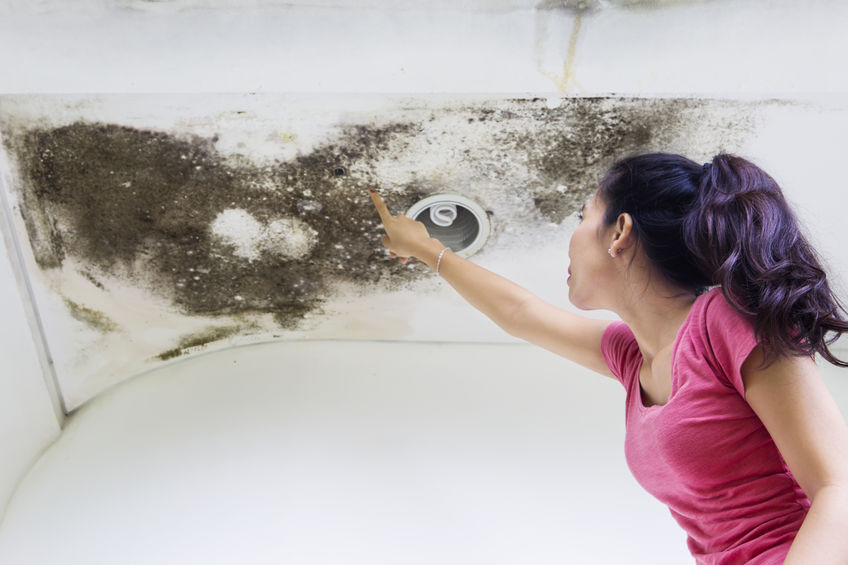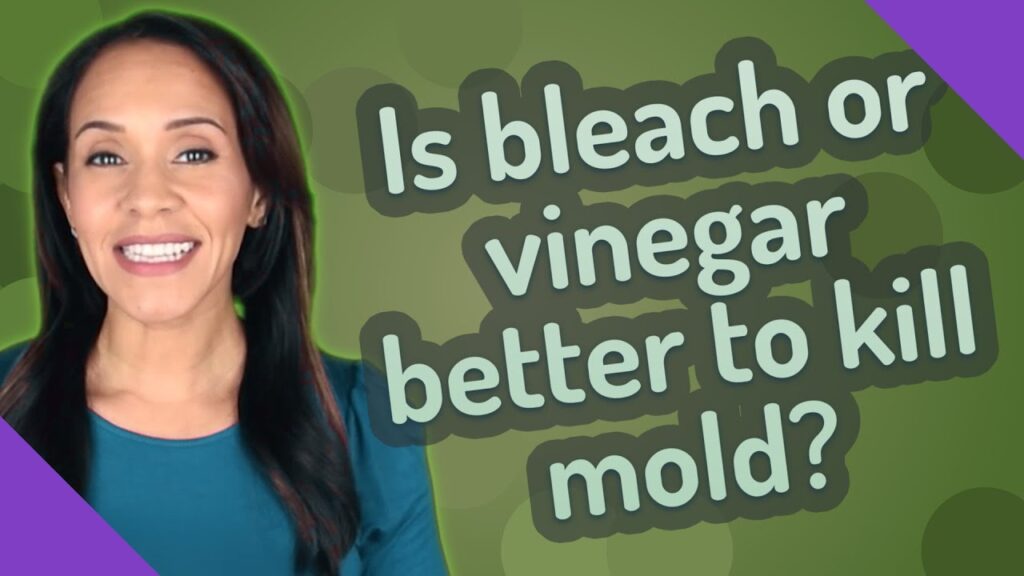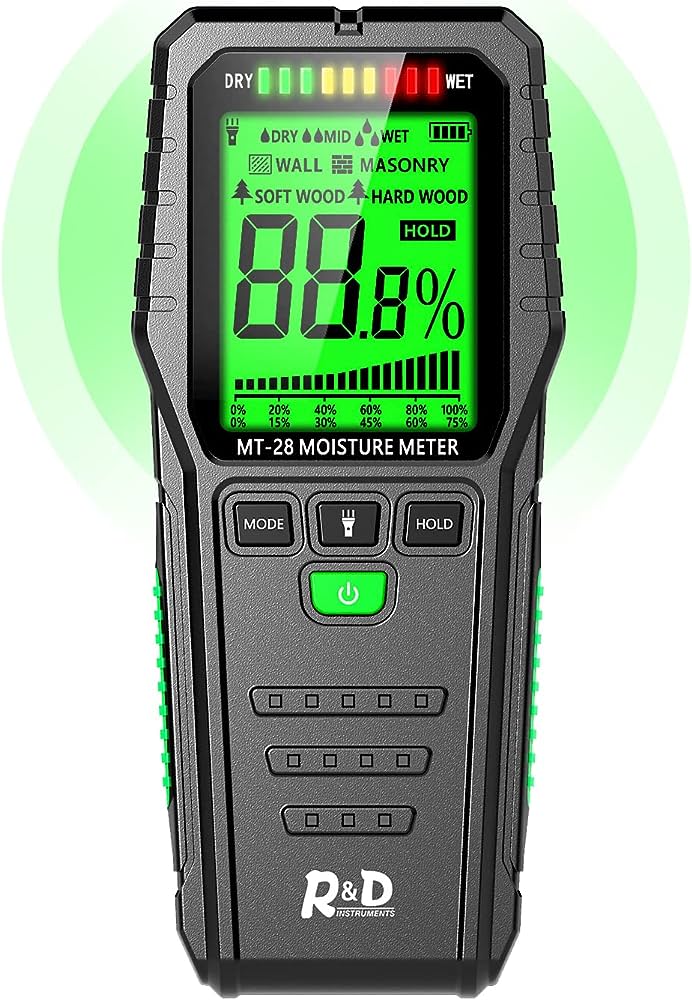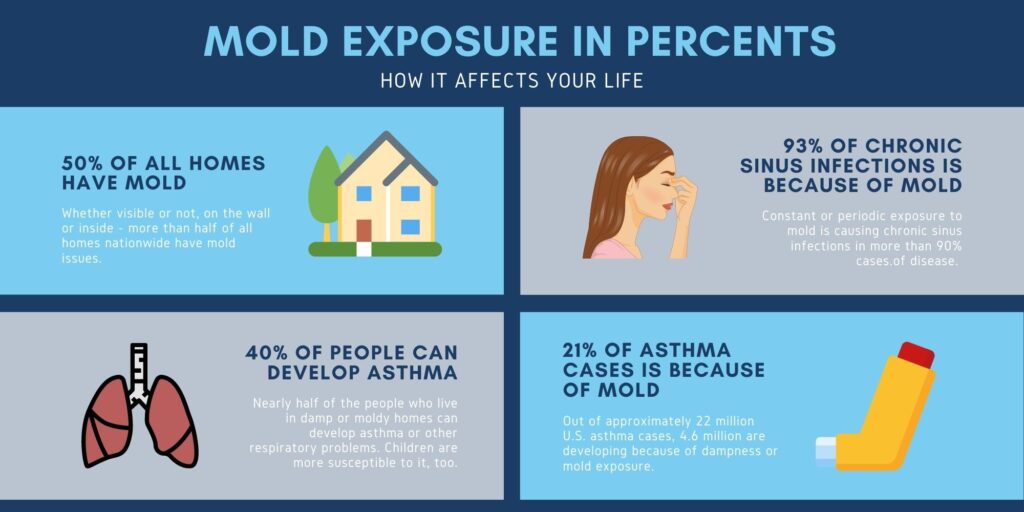Mold can be a persistent and unsightly problem, but finding an effective solution to eliminate it from your walls can sometimes feel like an uphill battle. Whether it’s due to excess moisture, poor ventilation, or a combination of factors, mold growth can pose health risks and lead to property damage. In this article, we explore various methods and solutions to help you effectively combat and kill mold on your walls, allowing you to create a healthier and cleaner living environment.
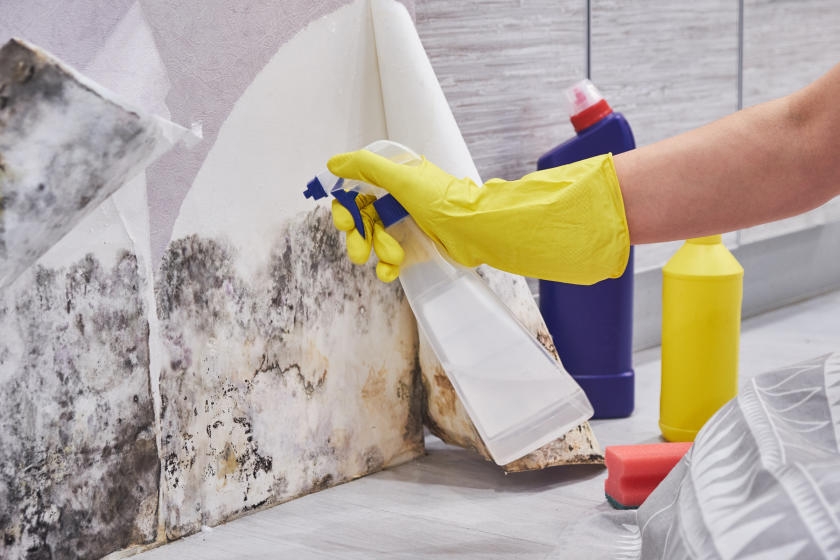

Prevention of Mold Growth
Mold growth can be a persistent and damaging problem in homes and buildings. However, there are several preventive measures you can take to minimize the chances of mold growth and keep your living spaces healthy and clean.
Controlling humidity levels
One of the most effective ways to prevent mold growth is by controlling the humidity levels in your home. Mold thrives in moist environments, so it is essential to keep the humidity below 50%. Use dehumidifiers or air conditioners to regulate humidity, especially in areas prone to moisture, such as bathrooms or basements. Additionally, ensure proper ventilation in these areas to allow moisture to dissipate.
Using mold-resistant paint
Another preventive measure is to use mold-resistant paint on your walls. Mold-resistant paints contain antimicrobial additives that help inhibit mold growth. These paints are designed to prevent mold spores from attaching to the surface and thriving. Consider using mold-resistant paint in areas with high moisture levels or previous mold issues, such as bathrooms or kitchens.
Improving ventilation
Proper ventilation is crucial in preventing mold growth. Ensure that your home has adequate ventilation, especially in areas prone to high moisture, such as bathrooms and kitchens. Use exhaust fans or open windows to let moisture escape and fresh air circulate. Good airflow helps keep surfaces dry, preventing moisture buildup and inhibiting mold growth.
Removing wallpaper
Wallpaper can provide an ideal environment for mold growth, as it can trap moisture and create the perfect breeding ground for mold spores. If you notice mold growth on your walls, consider removing any wallpaper in the affected areas. Removing wallpaper allows you to thoroughly clean and dry the underlying surface, reducing the chances of mold regrowth.
Fixing leaky pipes
Leaky pipes can contribute to excess moisture, which promotes mold growth. Inspect your plumbing system regularly for any signs of leaks and promptly address them if found. Fixing leaky pipes not only helps prevent mold growth but also conserves water and avoids potential water damage to your home.
Identification of Mold on Walls
Identifying mold growth on your walls is crucial for taking prompt action and preventing further damage. Knowing how to recognize the signs of mold growth and identifying different types of mold can help you effectively address the issue.
Recognizing signs of mold growth
Mold growth often manifests as visible patches or spots on the walls. These patches can vary in color, ranging from green, black, or brown to white or yellow. Additionally, mold-infested walls may emit a musty odor. Pay attention to any discoloration, spots, or unpleasant odors on your walls, as these can be indications of mold growth.
Identifying different types of mold
There are various types of mold that can grow on walls, each with its own characteristics and potential health risks. Common types include black mold (Stachybotrys chartarum), which is dark in color and has a slimy texture, and green mold (Aspergillus), which appears as powdery patches. It is important to note that not all molds are toxic, but it is best to address any mold growth promptly to prevent potential health issues.
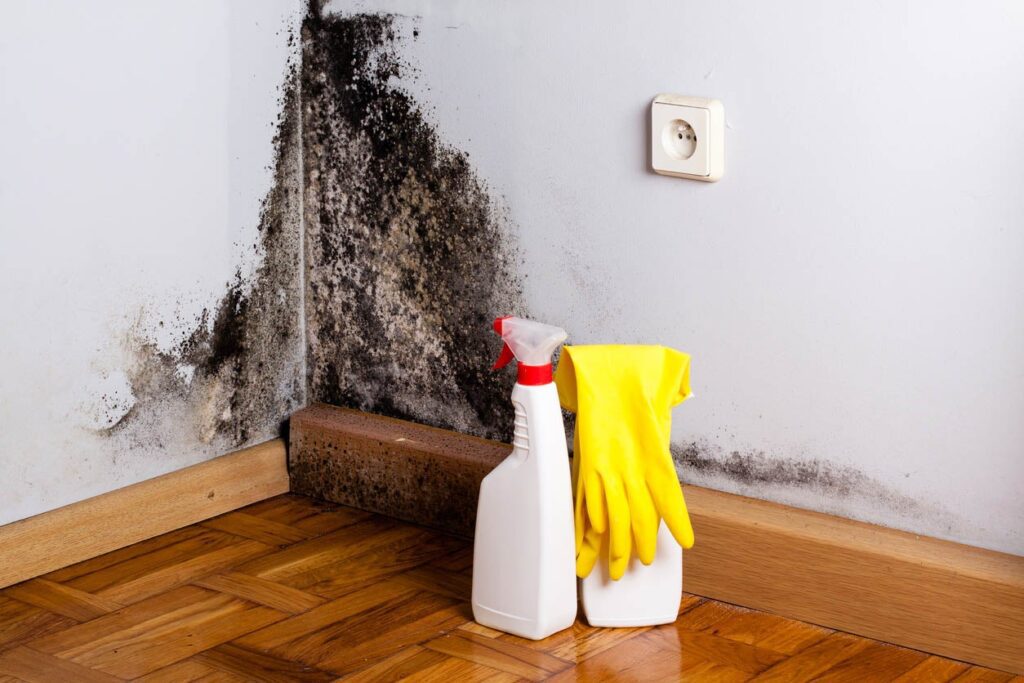

Health Risks Associated with Mold
Mold can pose several health risks, particularly for individuals with underlying respiratory conditions or weakened immune systems. Understanding the health risks associated with mold exposure is essential for protecting yourself and your loved ones.
Allergic reactions
Exposure to mold spores can trigger allergic reactions in sensitive individuals. Symptoms may include coughing, sneezing, nasal congestion, itchy or watery eyes, and skin irritation. Allergies to mold can vary in severity, with some individuals experiencing mild symptoms while others may have more severe reactions.
Respiratory problems
Mold can also affect the respiratory system, causing or exacerbating respiratory problems such as asthma or bronchitis. Inhaling mold spores can irritate the airways and lead to coughing, wheezing, shortness of breath, and chest tightness. Individuals with pre-existing respiratory conditions should be particularly cautious in mold-infested environments.
Mycotoxin exposure
Certain types of molds produce mycotoxins, which are toxic substances that can have adverse effects on human health. Prolonged exposure to mycotoxins can lead to a range of symptoms, including fatigue, headaches, dizziness, neurological issues, and even organ damage in severe cases. It is important to handle mold growth promptly to minimize the risk of mycotoxin exposure.
Natural Remedies for Mold Removal
If you prefer to use natural solutions for mold removal, there are several effective options available. These natural remedies are safe, environmentally friendly, and can help eliminate mold from your walls.
White vinegar
White vinegar is a versatile and effective natural cleaner that can kill mold spores and inhibit their growth. Mix equal parts white vinegar and water in a spray bottle and generously spray the affected areas. Let the solution sit for a few hours before scrubbing the mold away with a brush. Finish by wiping the area clean with a damp cloth.
Tea tree oil
Tea tree oil has natural antifungal properties, making it an excellent choice for mold removal. Add a teaspoon of tea tree oil to a spray bottle filled with water and shake well to mix. Spray the solution onto the mold-infested walls and let it sit for a few hours. Scrub the area using a brush and wipe away any remaining mold. The strong scent of tea tree oil will dissipate over time.
Hydrogen peroxide
Hydrogen peroxide is a powerful disinfectant that can effectively kill mold on walls. Mix equal parts hydrogen peroxide and water in a spray bottle and apply the solution to the mold-infested areas. Leave it to sit for about 10 minutes before scrubbing the mold away with a brush. Finally, wipe the surface clean with a damp cloth.
Baking soda
Baking soda is known for its cleaning and deodorizing properties and can be used to remove and prevent mold growth. Create a paste by mixing baking soda with a small amount of water. Apply the paste to the mold-infested areas and scrub gently with a brush. Rinse the wall with water and wipe it clean. Baking soda not only removes mold but also helps absorb moisture, discouraging future mold growth.


Chemical Solutions for Mold Removal
In addition to natural remedies, chemical solutions can be effective in removing mold from walls. These solutions are readily available in stores and can provide an efficient option for tackling mold growth.
Bleach
Bleach is a commonly used chemical solution for mold removal due to its powerful disinfecting properties. To use bleach, mix one part bleach with three parts water in a spray bottle and apply it to the affected areas. Allow the solution to sit for a few minutes before scrubbing the mold away. Remember to wear gloves and ensure proper ventilation when using bleach.
Antifungal sprays
Antifungal sprays specifically formulated for mold removal can be effective in eliminating mold spores and preventing regrowth. These sprays typically contain active ingredients such as quaternary ammonium compounds or sodium hypochlorite. Follow the instructions on the product label and apply the antifungal spray to the mold-infested areas.
Ammonia
Ammonia is another chemical solution that can help remove mold from walls. Dilute ammonia with water in a spray bottle and apply it to the mold-infested areas. Let the solution sit for a few hours before scrubbing the mold away. When using ammonia, ensure proper ventilation as the fumes can be strong.
Commercial Mold Removal Products
If you prefer to use specialized products designed specifically for mold removal, there are various commercial options available. These products are formulated to effectively eliminate mold and prevent its regrowth.
Mold removal sprays
Mold removal sprays are convenient and easy-to-use products for tackling mold growth. They contain powerful fungicides and antimicrobial agents that kill mold spores and prevent them from returning. When using mold removal sprays, follow the instructions provided by the manufacturer for the best results.
Mold-killing paints
Mold-killing paints are a preventive measure that can help inhibit mold growth on walls. These paints are specially formulated with antimicrobial additives that prevent mold spores from attaching to the surface and thriving. Apply mold-killing paint to the affected areas after thorough cleaning to ensure long-lasting protection against mold.
Mold sealants
Mold sealants are coatings that provide an additional layer of protection against mold growth. They are applied over cleaned and dried surfaces to encapsulate any remaining mold spores and prevent their release into the air. Mold sealants can be particularly useful in areas prone to moisture, such as bathrooms or basements, to minimize the chances of mold regrowth.


Professional Mold Remediation
In some cases, professional mold remediation may be necessary to effectively address extensive mold infestations. Mold remediation professionals have the expertise, equipment, and knowledge to safely remove mold and restore your home to a healthy condition.
When to hire professionals
Consider hiring professionals for mold remediation when the mold growth covers a large area, extends beyond surface-level contamination, or if mold is present in difficult-to-access areas. Professionals can assess the severity of the mold infestation, identify the underlying causes, and develop a comprehensive remediation plan tailored to your specific situation.
Mold testing and inspection
Professional mold remediation often begins with mold testing and inspection. Mold testing involves collecting samples and analyzing them to determine the types and concentrations of mold present. Inspection allows professionals to identify the source of moisture and assess the extent of mold damage. This information helps guide the remediation process.
Steps involved in professional mold removal
The steps involved in professional mold removal typically include containment, air filtration, removal of mold-infested materials, thorough cleaning, and drying. Professionals use specialized equipment such as HEPA filters, negative air machines, and protective gear to safely contain and remove mold. They also ensure proper disposal of mold-infected materials to prevent further contamination.
Precautions and Safety Measures
Taking appropriate precautions and safety measures when dealing with mold is essential to protect your health and prevent further spread of mold spores. These measures help minimize exposure to mold and ensure safe handling of contaminated materials.
Wearing protective gear
When cleaning or removing mold, it is important to wear protective gear to minimize the risk of exposure. Wear gloves, goggles, and a mask or respirator to protect your skin, eyes, and respiratory system from mold spores and cleaning solutions. Properly dispose of or clean the protective gear after use to prevent cross-contamination.
Proper ventilation
Ensure proper ventilation during mold removal to reduce the concentration of mold spores in the air. Open windows and doors to allow fresh air to circulate, and use fans or exhaust systems to create airflow. This helps remove airborne mold spores and prevents their spread to other areas of your home.
Handling and disposing of mold-infected materials
When removing mold-infected materials, it is important to handle them carefully to avoid spreading mold spores. Use plastic bags or sheets to contain the materials and seal them tightly before removing them from your home. Dispose of the materials according to local regulations for hazardous waste or consult with a professional for proper disposal methods.
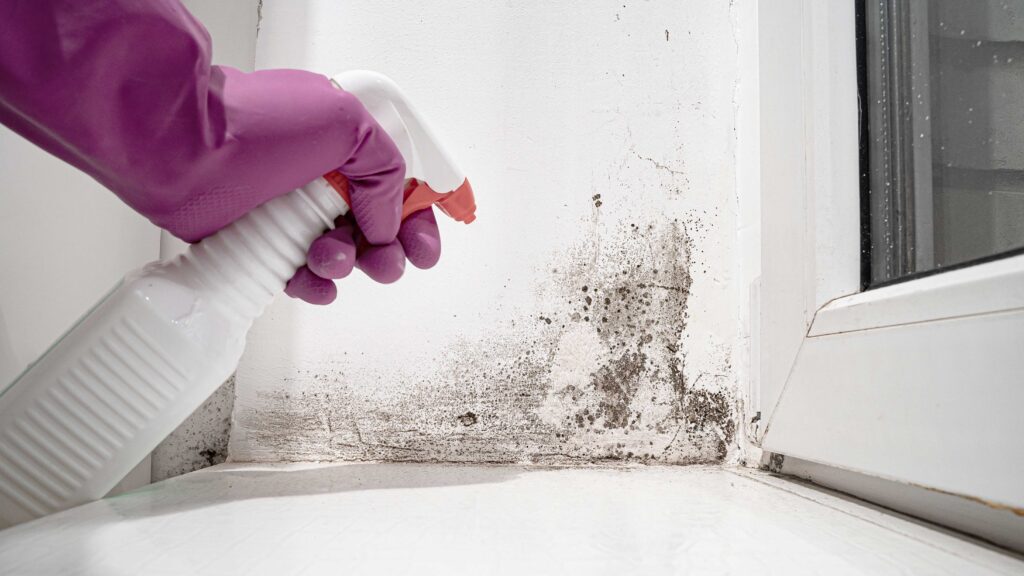

Preventing Mold Regrowth
Taking preventive measures is crucial to prevent mold regrowth and maintain a healthy living environment. By addressing underlying moisture problems and adopting regular cleaning and maintenance practices, you can reduce the risk of future mold growth.
Fixing underlying moisture problems
Addressing and fixing any underlying moisture problems in your home is essential to prevent mold regrowth. Repair leaky pipes, roofs, or windows to avoid excess moisture buildup. Ensure proper ventilation in moisture-prone areas, such as bathrooms and kitchens, and use dehumidifiers or air conditioners to maintain optimal humidity levels.
Regular cleaning and maintenance
Regular cleaning and maintenance of your home can help prevent mold growth. Regularly clean surfaces prone to moisture, such as bathroom tiles or kitchen sinks, using mold-inhibiting cleaners. Inspect and clean ventilation systems, such as exhaust fans or air ducts, to remove any accumulated dust or debris that can contribute to mold growth.
Monitoring humidity levels
Monitoring humidity levels in your home on an ongoing basis is crucial to prevent mold regrowth. Invest in a hygrometer to measure humidity levels in different areas of your home. Keep the humidity below 50% to inhibit mold growth. If necessary, use dehumidifiers or air conditioners to maintain optimal humidity levels.
Dealing with Extensive Mold Infestations
In some cases, mold infestations can be extensive and may require additional measures to address the issue effectively. When faced with extensive mold growth, consider the following steps:
Structural repairs
Extensive mold growth can cause structural damage to your home. If the mold has compromised the integrity of walls, floors, or ceilings, consult with professionals for necessary repairs. It is crucial to restore the structural integrity of your home to prevent further damage and ensure a safe living environment.
Temporary relocation during remediation
In situations where extensive mold remediation is necessary, temporary relocation may be recommended. This helps protect your health and prevent cross-contamination of clean areas during the remediation process. Consult with professionals to determine if temporary relocation is required and plan accordingly.
Working with insurance companies
If mold damage is covered by your insurance policy, contact your insurance company to discuss coverage and the necessary steps for filing a claim. Provide documentation of the mold damage, including photographs and any professional assessments or recommendations. Working closely with your insurance company can help ensure a smooth and efficient process for mold remediation coverage.
In conclusion, preventing mold growth, identifying mold on walls, understanding the associated health risks, and knowing how to remove and prevent mold are all crucial for maintaining a healthy living environment. By implementing preventive measures, using natural or chemical remedies, considering commercial products or professional mold remediation when necessary, and taking appropriate precautions and safety measures, you can effectively address mold issues and preserve the well-being of your home and its occupants.

